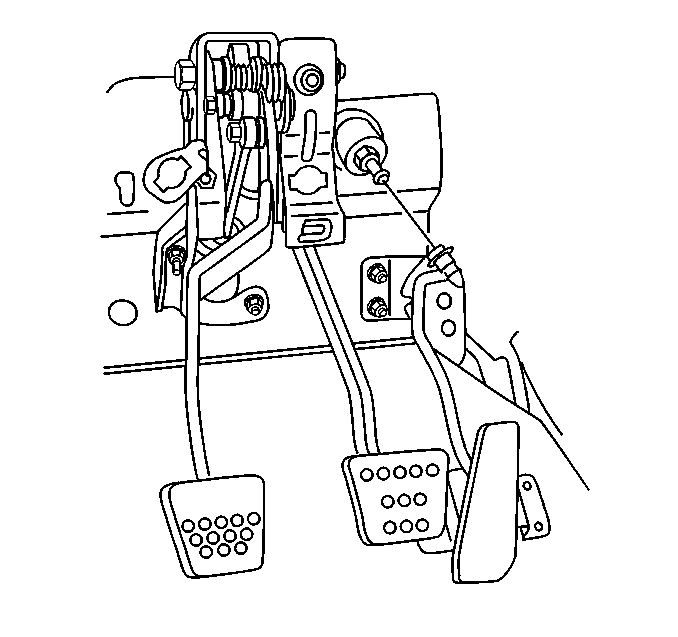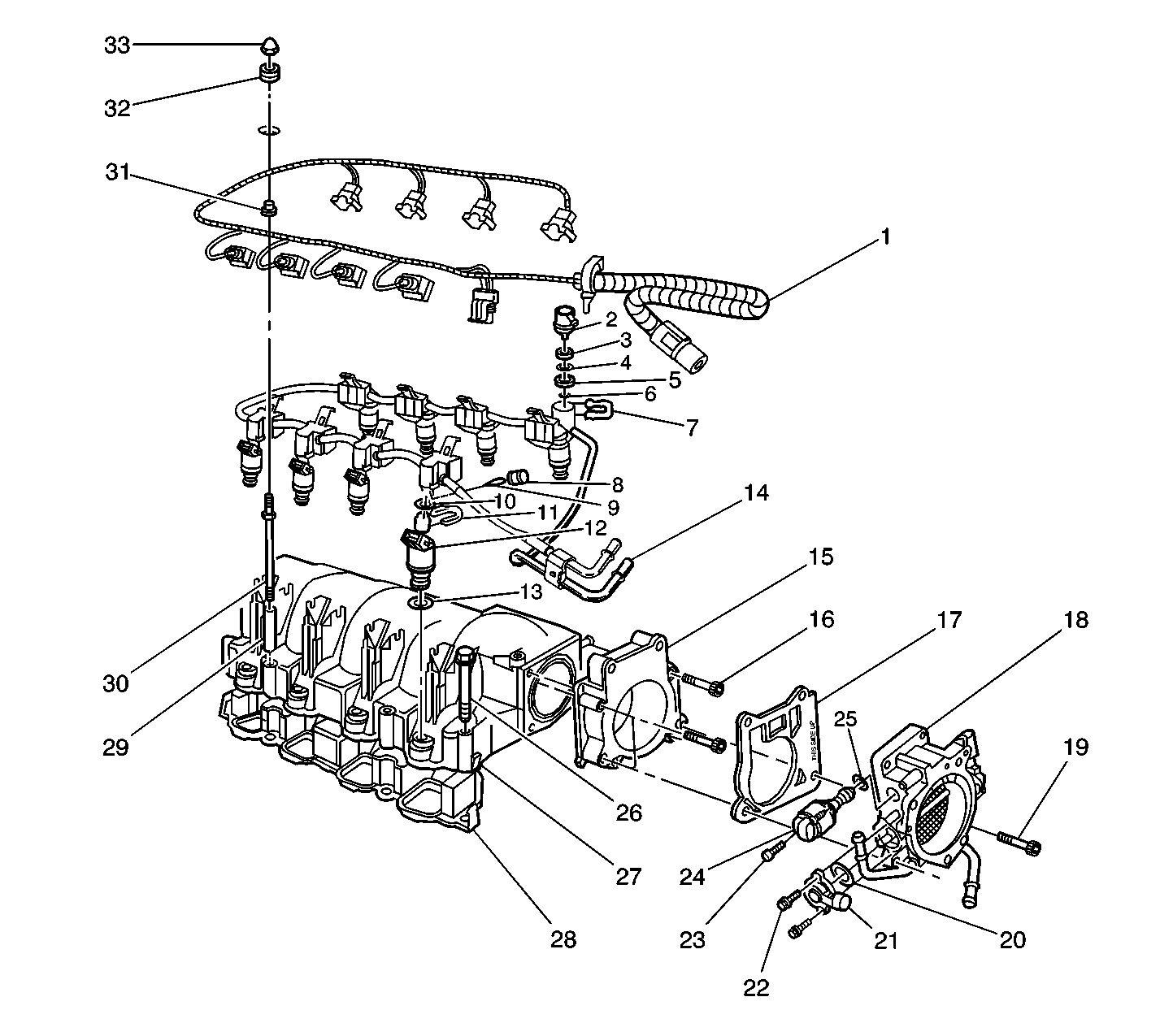The fuel pressure regulator is a diaphragm-operated relief
valve with fuel pump pressure on one side, and regulator spring pressure
and intake manifold vacuum on the other side. The regulator function
is to maintain a constant pressure differential across the injectors
at all times. The pressure regulator compensates for engine load
by increasing fuel pressure as engine vacuum drops. The pressure
regulator is mounted on the fuel rail.
The cartridge regulator is serviced as a separate component. When servicing
the fuel pressure regulator, insure that the back-up O-ring, large O-ring,
filter screen, and small O-ring are properly placed on the pressure
regulator.
With the ignition ON, and engine OFF (zero vacuum), system fuel pressure
at the pressure test connection should be 333-376 kPa (48-55 psi). If the
pressure regulator supplies fuel pressure which is too low or too
high, a driveability condition will result. Refer to
Fuel System Pressure Test
for information on diagnosing
fuel pressure conditions.


